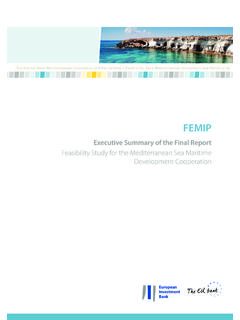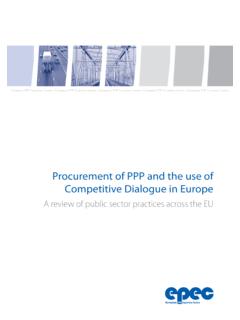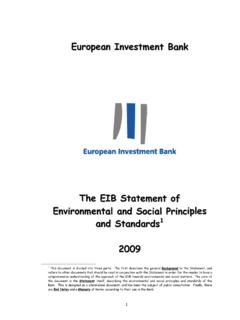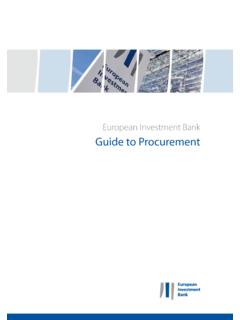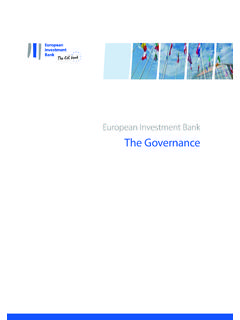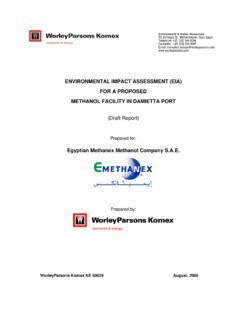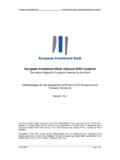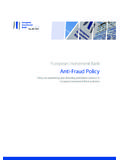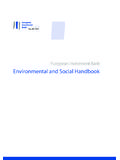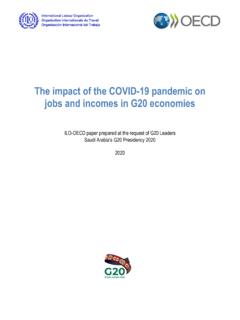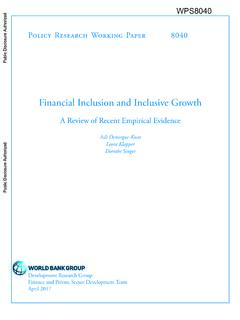Transcription of Report on Support to SMEs in Developing Countries Through ...
1 1 Report on Support to SMEs in Developing Countries Through financial Intermediaries November 2011 C O P E N H A G E N D A K A R G E N E V A J O H A N N E S B U R G M U M B A I N A I R O B I N E W YO R K S A N F R A N C I S C O S A N T I A G O W A S H I N G T O N D C 2 TABLE OF CONTENTS FOREWORD 3 EXECUTIVE SUMMARY 4 METHDOLOGY 5 INTRODUCTION TO SMES 6 THE SME SECTOR IN THE GLOBAL ECONOMY 7 THE IMPACT OF ACCESS TO FINANCE ON SMES 9 IMPLICATIONS OF SME GROWTH FOR DOMESTIC ECONOMIC DEVELOPMENT 13 BARRIERS TO FINANCE FOR SMES 17 THE ROLE FOR IFIS IN SME FINANCING 25 RECOMMENDATIONS AND ADDITIONAL RESEARCH 30 ANNEX I COMPARISON OF INVESTMENT STANDARDS ACROSS IFIS 32 ANNEX II STEERING GROUP 37 ANNEX III LITERATURE OVERVIEW OF SME INVESTMENT 39 3 FOREWORD The development community has long upheld that a thriving private sector is essential for economic development. SMEs play an instrumental, but often under-recognized, role in private sector growth.
2 This Report reviews a large body of research, and demonstrates how SMEs in Developing Countries are often hampered by an inability to obtain financial capital for growth and expansion. Local financial systems do not sufficiently cater to the needs of SMEs, with negative consequences for economic development. This Report develops interventions to close the gap in financing, and outlines contributing roles for public and multilateral actors. It describes both the challenges and the potential for international financial institutions to work Through local intermediaries and stimulate capital provision to SMEs in a financially and socially sustainable manner. This Report makes a valuable contribution to the wider debate, but much more remains to be done. Future research should address the impact of providing access to finance to SMEs, and the optimal roles and responsibilities for public sector actors.
3 We hope that this Report will serve as an inspiration and impetus to others to undertake further research. The Steering Group, Amit Bouri (Director of Strategy and Development, Global Impact Investing Network) Mark Breij (Fund Manager, Cordaid) Magatte Diop (Founder and Managing Partner, Peacock Investments) Randall Kempner (Executive Director, Aspen Network of Development Entrepreneurs) Bailey Klinger (Founder, Entrepreneurial Finance Lab) Keely Stevenson (CEO, Bamboo Finance USA) 4 EXECUTIVE SUMMARY This Report outlines the need to provide capital to Small and Medium Enterprises (SMEs) in Developing Countries . It shows the impact of this capital on economic development, and the role for International Finance institutions (IFIs) in the provision of this capital. Finally, it outlines recommendations for additional interventions and further research. SMEs in Developing Countries face a financing gap that undermines economic prosperity SMEs are a fundamental part of the economic fabric in Developing Countries , and they play a crucial role in furthering growth, innovation and prosperity.
4 Unfortunately, they are strongly restricted in accessing the capital that they require to grow and expand, with nearly half of SMEs in Developing Countries rating access to finance as a major constraint. They might not be able to access finance from local banks at all, or face strongly unfavourable lending conditions, even more so following the recent financial crisis. Banks in Developing Countries are in turn hampered by the lack of lender information and regulatory Support to engage in SME lending. The overall result is absence of a well-functioning SME lending market, and SMEs are impeded in their growth, with negative consequences for innovation, economic growth and macro-economic resilience in Developing Countries . With targeted interventions, IFIs play an important role in closing this gap Targeted IFI Support , such as guarantees or technical assistance, helps to build up the knowledge and expertise of intermediaries with respect to SME lending, thus helping to catalyse an independently sustainable SME lending market.
5 In this way, International Finance institutions (IFIs) play an important role in catalysing the SME lending market in Developing Countries . As with any public intervention in private markets, the benefits need to outweigh the costs, potential adverse incentives and unintended consequences. However, IFIs are often better placed to Support SMEs than local governments, whose Support schemes often are less cost-efficient and more susceptible to political capture. IFIs achieve their cost-efficiency by working Through local intermediaries, with the additional benefit of stimulating the creation of a local lending industry. financial and social sustainability is further enhanced by judiciously selecting and screening intermediaries, applying strict lending standards and carefully calibrating controls and incentives. A clear research agenda has been identified to further enhance the effectiveness of interventions.
6 Increased research and empirical evidence will help to further strengthen the case for SME Support and the effectiveness of specific interventions. Additional research on the overall impact of capital provision to (different types of) SMEs on economic and social indicators would be helpful for the overall advocacy for SME interventions. Research on the optimal structure of interventions would help to further increase the financial and social sustainability of SME interventions. 5 METHODOLOGY This Report on SME development in Developing Countries Through financial intermediaries was drafted by Dalberg Global Development Advisors. The analysis was conducted during a period of six weeks between February 21 and April 1, 2011. Feedback was sought and incorporated during the following months. The study was made possible Through financial Support from the European Investment Bank (EIB).1 The Report is based on extensive desk research, guidance from the steering group and additional interviews with experts from International Finance The Report is written to address external interested parties, including policy makers, civil society and the general public.
7 Dalberg would like to thank everyone who contributed to this Report , in particular all interviewees, for their time and cooperation. Special gratitude goes out to the advisory panel: Amit Bouri Director of Strategy and Development, Global Impact Investing Network Mark Breij Fund Manager, Cordaid Magatte Diop Founder and Managing Partner, Peacock Investments Randall Kempner Executive Director, Aspen Network of Development Entrepreneurs Bailey Klinger Founder, Entrepreneurial Finance Lab Keely Stevenson CEO, Bamboo Finance USA Dalberg also sought the views of Transparency International. For questions or comments, please contact Wouter Deelder at 1 The EIB made suggestions on the content of the Report , but did not influence the conclusions or overall recommendations 2 Asian Development Bank (ADB), African Development Bank (AFDB), European Bank of Reconstruction and Development (EBRD), International Finance Cooperation (IFC) and Overseas Private Investment Cooperation (OPIC) 6 INTRODUCTION TO SMEs SME definition The term SME encompasses a broad spectrum of definitions.
8 Different organizations and Countries set their own guidelines for defining SMEs, often based on headcount, sales or While Egypt defines SMEs as having more than 5 and fewer than 50 employees, Vietnam considers SMEs to have between 10 and 300 employees. The World Bank defines SMEs as those enterprises with a maximum of 300 employees, $15 million in annual revenue, and $15 million in assets. The Inter-American Development Bank, meanwhile, describes SMEs as having a maximum of 100 employees and less than $3 million in In this Report , we follow the European Union definition: The category of micro, small and medium-sized enterprises is made up of enterprises which employ fewer than 250 persons and which have an annual turnover not exceeding 50 million euro, and/or an annual balance sheet total not exceeding 43 million euro. Small and medium enterprises are thus defined as firms with 10 to 250 employees, and more than 10 million euro turnover or annual balance sheet This definition is more encompassing, and much larger, especially with regards to turnover, than some others.
9 The precise definition however, does not impact the overall conclusions and findings of this Figure 1 - Definition of micro-, small- and medium-sized enterprises7 Enterprise category Headcount Turnover Balance sheet total medium-sized < 250 50 million 43 million small < 50 10 million 10 million micro < 10 2 million 2 million 3 As different organizations define SMEs differently, cross comparison can be difficult 4 Milken Institute, Stimulating Investment in Emerging-Market SMEs, October 2009. A range of definition is also included in the CGAP publication financial Access 2010 5 European Commission, 2003, Extract of Article 2 of the Annex of Recommendation 2003/361/EC 6 The lack of a common definition has an effect on the eligibility of SME intervention schemes. For example, the Ghanaian definition allows Support to all but 127 firms in the country (DEG Atrium dialogue on promoting SME) 7 European Commission, Enterprise and Industry, 2011.
10 Small and medium-sized enterprises (SMEs), SME Definition 7 THE SME SECTOR IN THE GLOBAL ECONOMY The SME sector is the backbone of the economy in high-income Countries , but is less developed in low-income Countries . The Organisation for Economic Co-operation and Development (OECD) reports that more than 95% of enterprises in the OECD area are SMEs. These enterprises account for almost 60% of private sector employment, make a large contribution to innovation, and Support regional development and social Also in low-income Countries , the SME sector makes a critical contribution to GDP and employment, as shown in Figure 2, Figure 3 and Figure 4 below. 9 SMEs include a wide range of businesses, which differ in their dynamism, technical advancement and risk attitude. Many are relatively stable in their technology, market and scale, while others are more technically advanced, filling crucial product or service niches.
